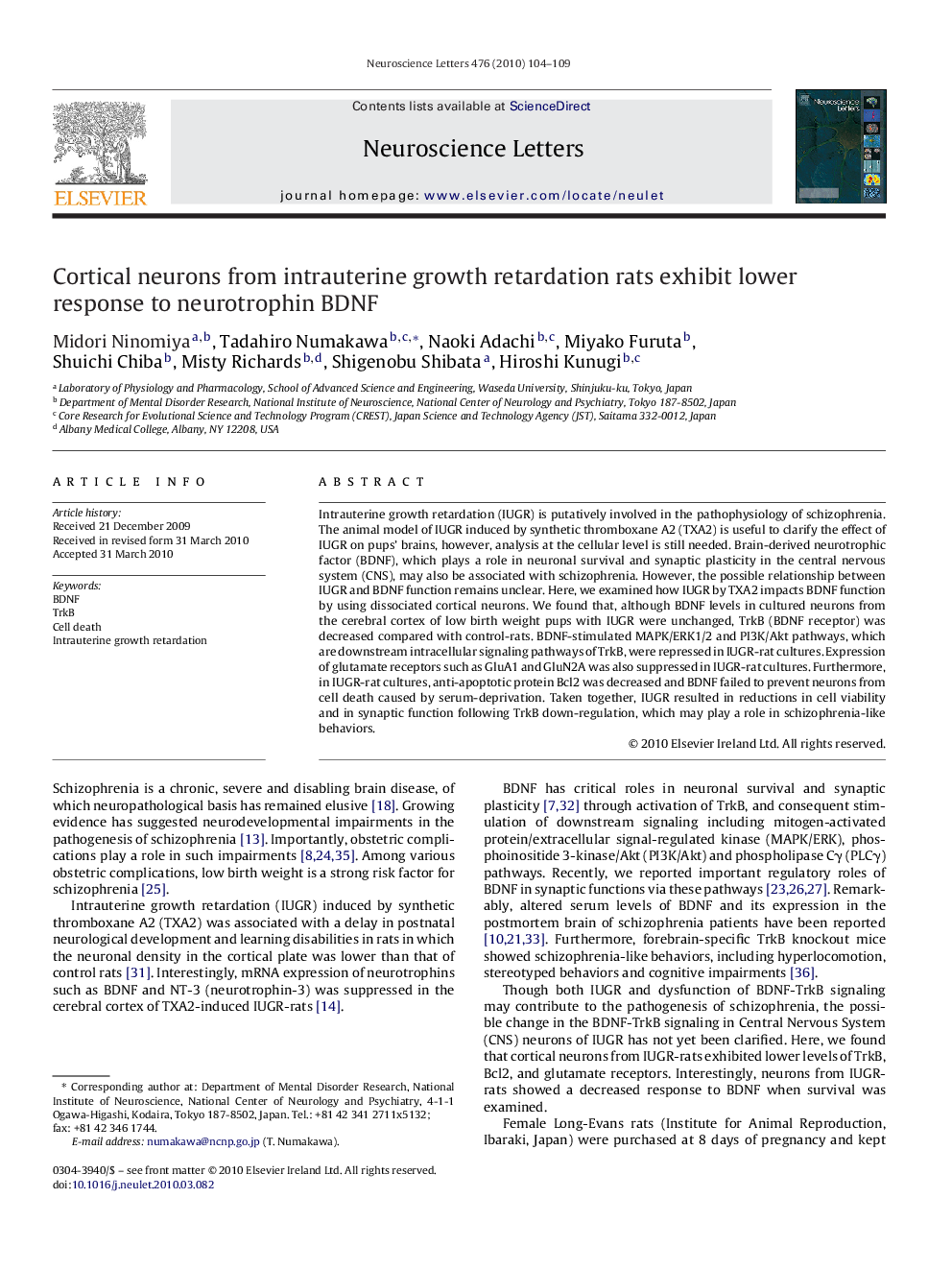| Article ID | Journal | Published Year | Pages | File Type |
|---|---|---|---|---|
| 4346041 | Neuroscience Letters | 2010 | 6 Pages |
Abstract
Intrauterine growth retardation (IUGR) is putatively involved in the pathophysiology of schizophrenia. The animal model of IUGR induced by synthetic thromboxane A2 (TXA2) is useful to clarify the effect of IUGR on pups' brains, however, analysis at the cellular level is still needed. Brain-derived neurotrophic factor (BDNF), which plays a role in neuronal survival and synaptic plasticity in the central nervous system (CNS), may also be associated with schizophrenia. However, the possible relationship between IUGR and BDNF function remains unclear. Here, we examined how IUGR by TXA2 impacts BDNF function by using dissociated cortical neurons. We found that, although BDNF levels in cultured neurons from the cerebral cortex of low birth weight pups with IUGR were unchanged, TrkB (BDNF receptor) was decreased compared with control-rats. BDNF-stimulated MAPK/ERK1/2 and PI3K/Akt pathways, which are downstream intracellular signaling pathways of TrkB, were repressed in IUGR-rat cultures. Expression of glutamate receptors such as GluA1 and GluN2A was also suppressed in IUGR-rat cultures. Furthermore, in IUGR-rat cultures, anti-apoptotic protein Bcl2 was decreased and BDNF failed to prevent neurons from cell death caused by serum-deprivation. Taken together, IUGR resulted in reductions in cell viability and in synaptic function following TrkB down-regulation, which may play a role in schizophrenia-like behaviors.
Related Topics
Life Sciences
Neuroscience
Neuroscience (General)
Authors
Midori Ninomiya, Tadahiro Numakawa, Naoki Adachi, Miyako Furuta, Shuichi Chiba, Misty Richards, Shigenobu Shibata, Hiroshi Kunugi,
